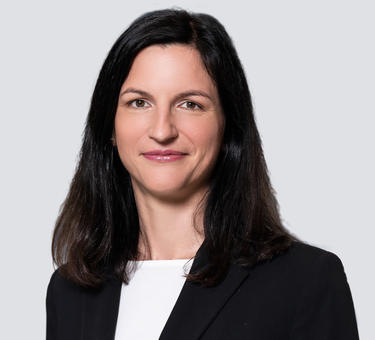Imagine that you own a beautiful house which you rent to lease out to tenants. It’s set in a great, popular location, and equipped with the latest comforts and living solutions. But over the course of time, this property starts to look old and tired; things which were once state-of-the-art become simply ordinary, and later they appear distinctly old-fashioned. A great opportunity for strong rental returns and great quality of life has been squandered through inactivity and an unwillingness to invest in the property.
This is one of the traps that many industrial real estate developers and operators fall into with their warehouses. At fault is their neglect of Capital Expenditures, known as Capex, which is one of the most important activities incumbent on any real estate developer that cares about providing great spaces to customers.
Put simply, Capex is money invested in physical assets. For real estate developers such as Prologis, it includes continuous investment in maintaining warehouses and other areas of our parks, ensuring they stay top-notch for customers over the course of decades. Each year, landlords invest millions into their portfolio in order to improve facilities. It’s a fundamental part of remaining competitive.
Managing Capex requires a different type of skillset, requiring developers to think about their portfolios through the lens of asset management. Developers create short-term, detailed budgets for the coming one or two years, as well as longer-term budgets covering improvements for the coming decade. Typically, Capex varies from 7-15% of the net operation income of a developer’s portfolio, depending on the age of that portfolio and any additional initiatives or company priorities that drive specific improvements.

Managing Capex requires a different type of skillset, requiring developers to think about their portfolios through the lens of asset management. Developers create short-term, detailed budgets for the coming one or two years, as well as longer-term budgets covering improvements for the coming decade. Typically, Capex varies from 7-15% of the net operation income of a developer’s portfolio, depending on the age of that portfolio and any additional initiatives or company priorities that drive specific improvements.
Today, such additional motivations often include investments relating to ESG initiatives, decarbonization, automation, and more. Heat pumps are being installed in many facilities, while roof insulation with extended durability of up to 30 years is being invested in by developers with a view to being solar-power ready. Taking such a long-term view, developers are willing to bear the additional costs of using the best materials. Logistics parks are also being prepared for a new era in transportation, through the creation of electric vehicle charging stations, while smart meters have become a vitally import tool for customers, allowing the remote monitoring and control of utilities usage. Developers undertake feasibility studies in order to understand the impact of all these potential Capex investments.
For ESG-related Capex spending, developers do not have to go it alone. Subsidy programs at the national and EU level are in place to support such investments, helping logistics real estate, and supply chains as a whole, operate in more sustainable and environmentally-friendly ways.
Allow me to give an example of this approach from Prologis Park Prague-Rudná. Investments to cut energy consumption and promote sustainability at Rudná, co-financed by the European Union, saw a complete modernization of heating and lighting systems, across four project phases undertaken from 2019-2022. EU support allowed us to undertake a program which makes a significant difference in reducing CO2, particulate, SO2 and NOx emissions. It’s a project which we’re proud of, and one which demonstrates what can be achieved when public subsidies combine with ambition from private enterprise to drive sustainable change.
Still, a lot of other Capex investments are necessary, for one simple yet all-important reason: providing top-notch spaces for our customers. Rightly, customers are not keen on working at parks where a lack of investment has led to poor working conditions. Indeed, a lack of Capex investment in basic areas such as roof replacements, floor renovations, updates to docking bays, doors and external pavement areas, and investments in new fire alarm systems, lead to unsafe and unhealthy working conditions. Other vital but perhaps less “glamorous” Capex investments include ANPR (Automatic Number Plate Recognition) systems, the installation and maintenance of CCTV camera systems, “combs” for pumping stations, fast access gates, graphics systems for fire alarms, underground retention pools for capturing rainwater runoff, shared facilities to make life easier for drivers and hauliers, and many others.
In this sense, the benefits of Capex are felt by everyone using a logistics park: from the developer and operator, to the customers, their employees, and external park users. One of the chief goals of Capex is to create spaces where customers want to locate their business, and where people want to come to work.
To this end, a major portion of Prologis Capex budget goes on improving quality of life at our parks. We call this PARKlife. Throughout Central Europe, we’ve built five-a-side football pitches at our parks, we’ve landscaped attractive green areas and relaxation zones, installed book boxes, bike shelters, BBQs, and we’ve organized regular events making the most of these amenities. Believe it or not, these kinds of investments are part of Capex, too, and we think they’re vital. By making our parks better places to work and be, they help our customers attract the right workforce, which brings benefits to their operations. If developers aren’t willing to invest in their locations in this way, they won’t be able to bring these benefits to their customers, and they’ll lose competitiveness as a result.
Capex is vital to ensuring excellent customer experiences. As such, it makes sense for developers to listen to their customers when deciding how to allocate their Capex budget. After all, customers are the ones using warehouses and accompanying facilities day after day, week after week, and year after year. While developers have the expertise in what makes a great logistics space, the views and requirements of customers must be taken into account – especially as Build-To-Suit, customized developments become an increasingly important part of our business.
Capex budgets are, therefore, developed by combining insights from across various teams. Real Estate Customer Experience teams lead the process, but they draw on input from leasing and development colleagues. One thing you can be sure of about Capex budgets is that they’re never the same twice: every year there are different priorities, and every space and location has its own requirements that change over time.
At Prologis, we’re investing even more heavily in Capex than usual in 2024. Competition in the marketplace is strong, and we know that investing in our spaces is the key to retaining our existing customers while attracting new ones to our parks. Ultimately, we believe that great logistics real estate, just like a beautiful home, is something to cherish and be proud of. It’s something to maintain and continuously improve, because only by doing so can we provide real added value to our customers.
Pavla Prochazkova, Vice President, Real Estate and Customer Experience Lead.
*This article comes from the monthly magazine Eurobuild.
